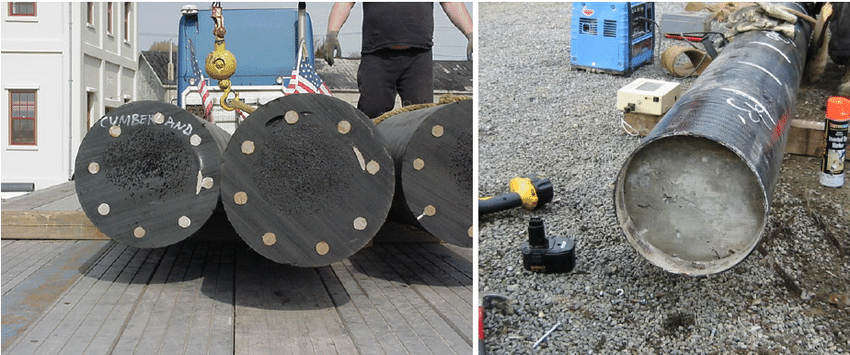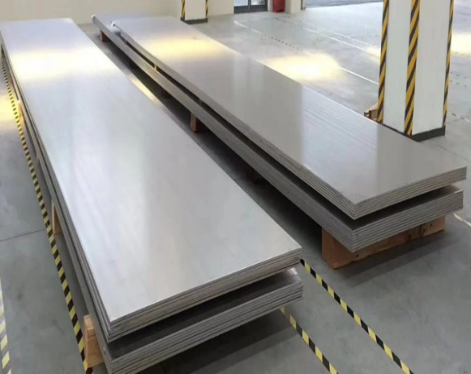Steel pipe piles are common in the construction industry and are mainly used in foundation projects or bridge projects.
What are steel pipe piles?
Steel pipe piles are spirally welded with steel plates to form pile foundations. Commonly used steel pipe piles have an outer diameter of 500~1200mm and a wall thickness of 10~18mm. At present, steel pipe piles are mainly used in offshore terminals. Due to the depth of the open sea and the large impact forces of waves, currents and ships, the working conditions of the piles are poor. In addition, construction in the open sea is greatly affected by climate and ocean hydrology, requiring fast construction progress. The use of steel pipe piles can better solve the above problems.
What are the advantages of steel piles?
The advantages of steel pipe piles are: high strength, large bending resistance, and the ability to withstand large horizontal forces; good elasticity and the ability to absorb large deformation energy. It can reduce the impact force of ships on dock buildings; it is convenient to manufacture and construct, and can speed up the construction progress of dock buildings.

What are the disadvantages of steel piles?
The disadvantages of steel pipe piles are: the amount of steel is large, about 3 to 4 times that of reinforced concrete piles; the cost is high, about 2 to 3 times that of reinforced concrete piles; they are easy to rust and have poor durability.
How do you install steel pipe piles?
(1) Steel pipe pile structure, type and specifications. The pipe material of steel pipe piles is generally made of ordinary carbon steel, with a tensile strength of 402MPa and a yield strength of 235.2MPa, or selected according to design requirements.
(2) Selection of piling machinery.
(3) Construction preparation. Including: leveling and cleaning the site; measuring, positioning and setting out; marking the pile center position, and marking the size and position of the pile diameter with lime circles; marking the pile driving sequence and pile driver driving route, and paving gravel at the driving position of the pile driver .
(4) Piling sequence. There are two methods of steel pipe pile construction: first digging the soil and then driving the pile, and first driving the pile and then digging the soil. In soft soil areas, the bearing capacity of the surface soil is generally acceptable, but the bearing capacity of the deep foundation is often very poor, and the groundwater level is high and difficult to drain.
(5) Transportation and hoisting of piles.
(6) Piling. To prevent the pile head from being damaged during hammering, a special pile cap must be placed on top of the pile head before pile driving. Vibration-absorbing wooden pads should be placed in areas that are directly subjected to hammer blows.
(7) Connect piles. When the steel pipe is lengthened, if the pipe diameter remains the same, groove welds of equal strength should be used; if the pipe diameter changes, flanges and bolts can be used for connection, and the same strength requirements should be met.
(8) Send piles.
(9) Penetration control. Steel pipe piles generally do not have pile boots and are driven directly through the opening.
(10) Steel pipe pile cutting. The cut short pile head is pulled out by a crane using an internal expansion pile pulling device. The pulled out short pile head can be used again after being welded and lengthened.
(11) Welding pile cover. In order to make the steel pipe piles and caps work together, a pile cover can be welded on each steel pipe pile, and 8 to 12 φ20mm anchoring steel bars can be welded on the outer wall.
(12) The pile end is connected to the cap.
Do steel piles get filled with concrete?
When building steel pipe piles, reinforcement is often required, so people will think of pouring cement. In fact, depending on different factors such as design drawings and soil conditions, some steel pipe piles need to be filled with cement, while others do not.
Generally speaking, if its bearing capacity cannot meet the design requirements, it needs to be poured. In addition, because the steel pile material itself is of good quality, it can prevent the ground from collapsing, so when choosing pouring, you can be flexible and choose the most suitable protection and reinforcement method.
In short, whether cement is required to be poured should be determined according to specific conditions and requirements during design and construction. This depends on the comprehensive consideration of soil stability, building self-weight, geological characteristics of the construction area and other related factors.
What are steel pipe piles?
Steel pipe piles are spirally welded with steel plates to form pile foundations. Commonly used steel pipe piles have an outer diameter of 500~1200mm and a wall thickness of 10~18mm. At present, steel pipe piles are mainly used in offshore terminals. Due to the depth of the open sea and the large impact forces of waves, currents and ships, the working conditions of the piles are poor. In addition, construction in the open sea is greatly affected by climate and ocean hydrology, requiring fast construction progress. The use of steel pipe piles can better solve the above problems.
What are the advantages of steel piles?
The advantages of steel pipe piles are: high strength, large bending resistance, and the ability to withstand large horizontal forces; good elasticity and the ability to absorb large deformation energy. It can reduce the impact force of ships on dock buildings; it is convenient to manufacture and construct, and can speed up the construction progress of dock buildings.

What are the disadvantages of steel piles?
The disadvantages of steel pipe piles are: the amount of steel is large, about 3 to 4 times that of reinforced concrete piles; the cost is high, about 2 to 3 times that of reinforced concrete piles; they are easy to rust and have poor durability.
How do you install steel pipe piles?
(1) Steel pipe pile structure, type and specifications. The pipe material of steel pipe piles is generally made of ordinary carbon steel, with a tensile strength of 402MPa and a yield strength of 235.2MPa, or selected according to design requirements.
(2) Selection of piling machinery.
(3) Construction preparation. Including: leveling and cleaning the site; measuring, positioning and setting out; marking the pile center position, and marking the size and position of the pile diameter with lime circles; marking the pile driving sequence and pile driver driving route, and paving gravel at the driving position of the pile driver .
(4) Piling sequence. There are two methods of steel pipe pile construction: first digging the soil and then driving the pile, and first driving the pile and then digging the soil. In soft soil areas, the bearing capacity of the surface soil is generally acceptable, but the bearing capacity of the deep foundation is often very poor, and the groundwater level is high and difficult to drain.
(5) Transportation and hoisting of piles.
(6) Piling. To prevent the pile head from being damaged during hammering, a special pile cap must be placed on top of the pile head before pile driving. Vibration-absorbing wooden pads should be placed in areas that are directly subjected to hammer blows.
(7) Connect piles. When the steel pipe is lengthened, if the pipe diameter remains the same, groove welds of equal strength should be used; if the pipe diameter changes, flanges and bolts can be used for connection, and the same strength requirements should be met.
(8) Send piles.
(9) Penetration control. Steel pipe piles generally do not have pile boots and are driven directly through the opening.
(10) Steel pipe pile cutting. The cut short pile head is pulled out by a crane using an internal expansion pile pulling device. The pulled out short pile head can be used again after being welded and lengthened.
(11) Welding pile cover. In order to make the steel pipe piles and caps work together, a pile cover can be welded on each steel pipe pile, and 8 to 12 φ20mm anchoring steel bars can be welded on the outer wall.
(12) The pile end is connected to the cap.
Do steel piles get filled with concrete?
When building steel pipe piles, reinforcement is often required, so people will think of pouring cement. In fact, depending on different factors such as design drawings and soil conditions, some steel pipe piles need to be filled with cement, while others do not.
Generally speaking, if its bearing capacity cannot meet the design requirements, it needs to be poured. In addition, because the steel pile material itself is of good quality, it can prevent the ground from collapsing, so when choosing pouring, you can be flexible and choose the most suitable protection and reinforcement method.
In short, whether cement is required to be poured should be determined according to specific conditions and requirements during design and construction. This depends on the comprehensive consideration of soil stability, building self-weight, geological characteristics of the construction area and other related factors.









